 Your new post is loading...

|
Scooped by
Patrick H.
|
Le 27 mars 2015, les agences d’acquisition des ministères de la Défense français et britannique, respectivement la Direction générale de l’armement (DGA) et DE&S, ont notifié le contrat « Maritime Mine Counter Measures » (MMCM). Cette notification est le résultat d’un dialogue compétitif conduit par l’OCCAR (Organisation conjointe de coopération en matière d’armement). Ce contrat est attribué à Thales associée à BAE Systems avec parmi les sous-traitants français le groupe ECA. Il permet à la France et au Royaume-Uni d’initier conjointement le développement d’une nouvelle capacité stratégique et interopérable entre nos deux marines, tout en maintenant leur industrie au meilleur niveau mondial dans le domaine de la lutte sous-marine. Le contrat notifié au consortium industriel porte sur la définition, la réalisation et la qualification de deux prototypes d’un système de drones navals, de surface et sous-marins, d’ici 2019. Ils seront mis en œuvre à partir d’un « bateau mère » ou depuis la terre. Les évaluations seront conduites par la Marine nationale et la Royal Navy. Par comparaison aux chasseurs de mines actuels, le système permettra de maintenir l’homme en dehors de la zone de danger. Lire l'intégralité de l'article sur Mer et Marine : http://www.meretmarine.com/fr/content/drones-de-guerre-des-mines-notification-du-marche-franco-britannique-mmcm

|
Scooped by
Patrick H.
|
WASHINGTON, D.C. – Engineering studies to include an electromagnetic railgun on a Zumwalt-class destroyer (DDG-1000) have started at Naval Sea Systems Command, NAVSEA’s head said Thursday. The work will do the math to determine if the Zumwalt-class will have the space, power and cooling to field a railgun – likely replacing one of the two 155mm BAE Advanced Gun Systems (AGS) ahead of the ship’s deck house, Vice Adm. William Hilarides told USNI News following remarks at the Office of Naval Research Naval Future Force Science and Technology Expo. “We have begun real studies – as opposed to just a bunch of guys sitting around – real engineering studies are being done to make sure it’s possible,” Vice Adm. William Hilarides said following remarks at The likely candidate for the weapon would be the third planned Zumwalt, Lyndon B. Johnson (DDG-1002) currently under construction at General Dynamics Bath Iron Works (BIW) with an expected delivery date of 2018. He said the first two ships – Zumwalt (DDG-1000) and Michael Monsoor (DDG-1001) – would be less likely to field the capability initially due to the schedule of testing with the new class. “The team is working diligently now but it would not happen until after delivery of the ships – probably the third ship is where we’d have it,” Hilarides said.
“That would certainly be my recommendation.” The Navy is in early stages of testing and fielding a railgun – which forgoes the gunpowder in the shells of conventional naval guns and instead uses high powered electromagnetic pulses along a set of rails to shoot a projectile at super sonic speeds. The Navy plans to test a BAE Systems prototype railgun onboard the Joint High Speed Vessel USNS Millinocket (JHSV- 3) next year. Last year, then Navy director of surface warfare now commander of U.S. Surface Forces Command, Vice Adm. Thomas Rowden told USNI News the Zumwalts would be likely used as test beds for emerging technologies like railguns and directed energy weapons the Navy wants for its next large surface combatant due to the ship’s size an ability to generate power. The integrated power system (IPS) on the 16,000-ton ships– powered by two massive Rolls Royce MT-30 gas turbines and two smaller Rolls-Royce RR450– allow the ships to route and generate 80 mega-watt power – much more electrical power than the current crop of U.S. destroyers and cruisers. On Wednesday, Chief of Naval Operations Adm. Jonathan Greenert said a Zumwalt would likely be the first ship to get the capability. The inclusion of the railgun does mean a capabilities trade for the ship.

|
Scooped by
Patrick H.
|
The U.S. Navy has confirmed previous plans to deploy its futuristic weapon--the electromagnetic railgun--on board one of it ships next year. The deployment of the railgun on board the as yet unspecified naval vessel will commence sea trials stage for this weapon the Navy says will change the face of future sea warfare. This sea test will mark the first time an electromagnetic railgun has been demonstrated at sea, and is a significant advance in naval combat. It follows successful land trials of the prototype that achieved breakthroughs in compact power and gun design. The Navy said it will test the next phase of prototype at both sea- and land-based sites in 2016 and 2017. Once deployed in force by the next decade, the railgun will place at a serious disadvantage and may obsolete the surface naval forces of the U.S.' strategic competitors such as China. The Navy will publicly display the futuristic weapon that uses electromagnetic energy to kill its targets for the first time from Feb. 4-5 at the Naval Future Force Science and Technology (S&T) EXPO in Washington, D.C. The expo is a window into the future of the U.S. Navy, showcasing the latest advances in power projection and force protection. "The electromagnetic railgun is among several disruptive capabilities that the Naval Research Enterprise is championing to ensure a dominant, capable and relevant naval force for the future," said Chief of Naval Research Rear Adm. Mat Winter. He added this year's expo will showcase the naval portfolio of innovative breakthrough technologies that are shaping the U.S. Navy's warfighting tactics and changing the way it will fight in the future. The Navy describes its electromagnetic railgun as a long-range weapon that fires projectiles using electricity instead of chemical propellants. Magnetic fields created by the railgun launch projectiles at 4,500 mph towards targets 110 miles away or beyond the horizon. The Navy expects that with its increased velocity and extended range, the railgun will give its warships a multi-mission capability, allowing them to conduct precise naval surface fire support or land strikes; ship defense and surface warfare. A launch velocity of Mach 6 allows the railgun's projectiles to rely on kinetic energy for maximum effect, and reduces the amount of high explosives needed to be carried on ships. A guided projectile is launched from a railgun at such high velocities it can achieve greater ranges than conventional guns. It maintains enough kinetic energy that it doesn't require any kind of high explosive payload when it reaches its target. The target such a warship is destroyed by massive kinetic impact. "The electromagnetic railgun represents an incredible new offensive capability for the U.S. Navy," said Rear Adm. Bryant Fuller, the Navy's chief engineer. "This capability will allow us to effectively counter a wide-range of threats at a relatively low cost, while keeping our ships and sailors safer by removing the need to carry as many high-explosive weapons."

|
Scooped by
Patrick H.
|
An expert defence team has until July next year to reverse the fortunes of the beleaguered air warfare destroyers, as the government reveals the $8.5 billion construction project is running three years behind schedule. As revealed in The Australian today, the government has released its long-awaited rescue plan for the air warfare destroyer project, following eight months of negotiation with defence contractors. But exposing the challenge to salvage the nation’s largest ever defence project, Finance Minister Mathias Cormann revealed that the first and second ships are now running 30 months behind schedule, and the final ship’s delivery date is now three years delayed until 2020. This is a further 15 month delay since the project was last “rebaselined” in 2012. Senator Cormann said the group of up to 40 defence experts from Raytheon, Navantia and BAE to be deployed to the ASC shipyard in Adelaide would be contracted to help manage the project until July next year. “The government has been working and is committed to ensuring that this important defence project is put back on track,” Senator Cormann said. “We are committed to stop the growing schedule and cost overruns which we inherited from our predecessors.” He said that the most recent advice was that the project was at least $600m over budget, but the new team would. investigate the extent of the blowout.. “The work that is to be done over the interim period between now and the end of July 2015 will focus on really putting a final number on the actual cost overruns,” he said. A shipbuilding source said all participants had been convinced by the government to cooperate, in recognition that future shipbuilding contracts — including Australia’s role in the future submarine project — would be jeopardised if the AWD project could not be salvaged. “The government has clearly said the future of naval shipbuilding in Australia starts and finishes with turning the AWD around,” the source said. “There is no prospect of additional work for anyone in the industry unless we fix up the AWD program.” The move comes after Defence Minister David Johnston last week said ASC could not be trusted to build a canoe, and following attacks on the project as a “disgraceful mess” and a “skunk”. Senator Johnston said today that fixing the air warfare destroyer project was critical for proving the country had a viable shipbuilding future.

|
Scooped by
Patrick H.
|
The first phase of a major overhaul of Portsmouth Naval Base opens today (Wednesday 22 October). The 15 Dock Centre of Specialisation, for the maintenance of Destroyers and Frigates, features an upgrade to the dock and improved accommodation for staff. It's the first of four new centres within the base for future support to Royal Navy ships for global operations.
It's part of a 15 year programme which includes getting the base ready to house the Royal Navy's two new Queen Elizabeth Class aircraft carriers from 2017.
The new facility, opened by Rear Admiral Ian Jess, will be used for the upkeep and maintenance of Type 45 Destroyers and Type 23 Frigates and marks the start of a 15 year transformation programme to modernise Portsmouth Naval Base, including preparations for the Royal Navy’s two new Queen Elizabeth Class Aircraft Carriers.
The arrival of HMS Queen Elizabeth by early 2017 has provided a catalyst for investment in the infrastructure of Portsmouth Naval Base. Investment requirements over the next 15 years have been captured within the ‘Portsmouth 2030 Programme’ which details a future vision for Portsmouth Naval Base.
The centres of specialisation have been the product of work undertaken by BAE Systems Maritime Services working in partnership with the Naval Base Command Portsmouth (NBCP) team, to capture infrastructure and facility requirements for both current and future classes of ship.
The new 15 Dock Centre of Specialisation will provide improved accommodation and amenities for Royal Navy and BAE Systems staff, new co-located storage facilities and an upgraded dock, complete with a new mobile harbour crane and a refurbished caisson. Re-modelling of the facility has also provided the opportunity to reduce Safety, Health and Environment (SHE) risks, by separating staff from plant and machinery, and controlling access to the site during operations.

|
Scooped by
Patrick H.
|
06/10/2014 (Infodefensa.com) Madrid - The Commonwealth of Australia Friday signed acceptance of ALHD Canberra , first of two ships LHD the Spanish shipbuilding company Navantia has built for that country, based on the LHD Juan Carlos I of the Spanish Armada . The contract, signed in 2007, included the construction of 85% in the Navantia shipyard in Ferrol and completion in Australia by BAE Systems . The ship was transferred to Australia in August 2012 and will be definitely delivered to the Australian Navy on 28 November. The construction of these ships has led to Navantia, according to the company, the entry in the niche market of this type of vessel, which has been consolidated with the choice of design LHD Spanish by the Turkish Navy .
Based on the Juan Carlos I Making amphibious assault ship ALHD Canberra began in 2008 in the shipyard of Navantia in Ferrol-Fene . She was launched in 2011 and in October 2012 came to Australia after two months at sea. It can carry up to 1,000 soldiers, 100 combat vehicles, 12 helicopters and four landing craft. Both the ship Canberra and the Adelaide -which came to Australia last February-are based on the Strategic Projection Ship ( BPE ) Juan Carlos I of the Spanish Armada, also designed and built by Navantia.

|
Scooped by
Patrick H.
|
The Abbott government will install a senior team of shipbuilders from Spanish firm Navantia to work on the Air Warfare Destroyers as it attempts to salvage the troubled $8.5 billion project. The move is one of the first steps in the government’s recovery plan for what Defence Minister David Johnston has described as a “disgraceful mess of a project” and a “skunk” that has been plagued with cost overruns of more than $500 million and delays of up to two years. Senator Johnston has said the reform strategy for the AWD project will be a “test case” for the Australian defence industry that will have a bearing on future procurement decisions. Sources close to Adelaide-based shipbuilder ASC said a team of up to 15 senior Navantia personnel would be charged with overseeing the integration and testing phase of the first of the Hobart-class destroyers ahead of delivery, due in October 2016. Additional personnel from systems contractor Raytheon are also expected to be embedded into the workforce. Navantia, which was excluded from the original AWD Alliance consortium and blamed for many of the project’s initial design flaws, will provide direction for the workforce alongside ASC. The move comes after a government review by former US secretary of navy Don Winter and Australian shipbuilder John White reportedly recommended installing BAE Industries to take control of the project. Government sources say the move is a small step in a “long, tortuous and complex” process that may yet see BAE take on a greater role. “There is a lot of gaming, positioning and uncertainty on the project; everyone wants it to end, but we have to get out of trouble first,” a government source said. Navantia and BAE are jockeying for work on the Future Frigate program to replace the navy’s eight Anzac-class frigates. BAE is understood to be reluctant to take over the AWD project without a guarantee of work on the Future Frigate program for which it wants to build its Type-26 global combat ship. Navantia wants to build a Future Frigate based on the AWD hull — an option the government has allocated $78m to explore. Finance Minister Mathias Cormann said the government reform process involved working with a number of companies, including Navantia, “to understand their capacity to assist in the successful delivery of Air Warfare Destroyer reform”. But he said a decision on the final participants of the reform process had not been made.

|
Scooped by
Patrick H.
|
LONDON, Sept. 11 (UPI) --The largest hull sections of Britain's second of two new aircraft carriers have been docked in Scotland, marking the beginning of the ship's assembly. The two hull sections -- one weighing about 6,700 tons and one weighing at nearly 9,000 tons -- were built by BAE Systems at company facilities in Portsmouth, England, and Glasgow, Scotland and are now in dry dock at Rosyth. "Every milestone in the carrier program is hugely significant and the recent announcement that HMS PRINCE OF WALES will enter service means there is a real sense of excitement as we start to bring the second ship together," said Ian Booth, managing director at the Aircraft Carrier Alliance. "Everyone working across the Alliance is incredibly proud of the work undertaken so far, in what is currently one of the biggest engineering projects in the country, and we remain focused on delivering both ships to the highest standards." HMS Prince of Wales is the second Queen Elizabeth-class carrier, which will carry F-35 Lightning II Joint Strike Fighters. It will be 920 feet long, have a range of 10,000 nautical miles and a speed of more than 29 knots. The first carrier of the class is currently being outfitted with systems and is expected to begin sea trials in 2016. The Aircraft Carrier Alliance responsible for the shipbuilding project is a partnership between BAE Systems, Thales UK, Babcock and the Ministry of Defense.

|
Rescooped by
Patrick H.
from Defense
|
08/19/2014 (Infodefensa.com) Carlos E. Hernández. Caracas - Minister of National Security of Trinidad and Tobago , Gary Griffith , reported on the priorities of the Coast Guard of your country, on ships as review a press release for office. First, the minister said Griffith urgent need to purchase a training ship for naval training through the Trinidad and Tobago Coast Guard ( TGCT ). He said that training should include, among other specialties, the following: Duty Officer, Operating a Vessel, Sailing, Seamanship, Equipment Operator, and System Controller (machines). Maritime Patrol Similarly, announced that the Ministry of National Security is proceeding to acquire two Long Range Patrol Vessels (patrol high) and, in this regard, said they are exploring all avenues to ensure that officers and sailors of TGCT are well trained and ability to operate these ships in order to obtain maximum performance. The Griffith minister recalled that previous acquisition agreements, it was discovered that they were being purchased three ships patrol ocean (OPV) without considering the human resources required to operate such vessels. Consequently, the TTTCG was found in the position of not having a full complement of officers to properly operate the three OPV simultaneously. Problems with BAE Systems With regard to the above, note that in April 2007, the government of the Republic of Trinidad and Tobago signed a contract with VT Ship Building ( BAE Systems ) to build three patrol vessels type OPV whom were baptized Port of Spain (GC50), Scarbrough (GC51) and San Fernando (GC52). The first vessel was launched at sea in November 2009, while the other two launchings occurred in July 2010 The problems began in 2010, when it was postponed twice, delivery Port of Spain . In addition, serious problems arose with the combat system, which did not correspond to the contract specifications. Consequently, in September 2010 the Trinidadian government terminated the contract, and in February 2012, the Brazilian Navy bought three ships Regarding the two Long Range Patrol Vessels being purchased, although note the supplier is not required, it is important to remember that during a visit to China last January, Prime Minister of Trinidad and Tobago, Kamla Persad-Bissessar "convinced" his counterpart Li Keqiang to sell one of the two long-range patrols were under construction for the coastguard Asian country However, there has been no further information on the subject since then. Training in naval ships of Japan Moreover, the minister noted Griffith representing the benefit for the Trinidad and Tobago Coast Guard training received from the Japan Maritime Self-Defence Force during the recent visit to Trinidad for its Training Squadron .. At the invitation of Admiral Hideki Yuasa , TGCT members sailed on ships of Training Squadron and received training on board during the trip to Kingston , Jamaica. Griffith expressed his gratitude to the Japanese naval squadron to provide the opportunity to gain experience TGCT aboard vessels carrying high.
Via Valerie I.

|
Scooped by
Patrick H.
|
BAE Systems Australia : le porte-aéronefs amphibie australien Canberra entame sa dernière série d'essais constructeur
NUSHIP CANBERRA, the first of two Landing Helicopter Dock Ship being built for the Australian Defence Force, sailed today on her final contractor sea trials before delivery to the Commonwealth.
The ship will head towards waters off southern New South Wales as part of the contractor trials before returning to Williamstown around the end of August.
The final contractor trials involved testing of the combat and communication systems as well as some platform systems and would take around two weeks to complete.

|
Scooped by
Patrick H.
|
The Navy has replaced two 57mm guns planned on the Zumwalt-class guided missile destroyer designed to fight off swarm boat attacks with a smaller pair of 30mm guns, Naval Sea Systems Command (NAVSEA) told USNI News on Monday.
The trio of Zumwalt-class ships were originally designed to field the BAE Systems MK 110 close-in gun system (CIGS) — a gun used on both classes of Littoral Combat Ships (LCS) — to provide the ship’s company options to fight off so-called swarm boat attacks of the ship as part of a 2005 critical design review (CDR). “The basis of that decision was the expected performance of the gun and its munitions, coupled with desire for commonality in [Navy] and [the Coast Guard], according to a NAVSEA statement provided to USNI News. But in order to save weight and costs, NAVSEA elected to install twin General Dynamics 30 mm Mk 46 Gun System instead. NAVSEA said it continued to evaluate the Mk 110 after the 2005 CDR. “Through 2010, various analysis efforts were conducted to assess the performance of potential cost-saving alternatives to the Mk 110 CIGS, for both procurement and life-cycle costs,” read the statement.
“The results of the analysis for alternative systems to the Mk 110 CIGS were not conclusive enough to recommend a shift in plan.” The 57mm Mk 110 fires a 220 rounds/min at range of about nine nautical miles, according to information from BAE. Following a 2012 review the Navy, “concluded that the MK46 was more effective than the MK110 CIGS,” according to NAVSEA.
“In addition to the increased capability, the change from MK110 to Mk 46 resulted in reduction in weight and significant cost avoidance, while still meeting requirements… that will provide a robust rapid fire capability and increased lethality against hostile surface targets approaching the ship.” The 30mm Mk 46 has range 2.17 nautical miles and fires at a rate of 200 rounds/minute, according to the Navy. NAVSEA did not elaborate on what the original requirements were the DDG-1000.

|
Scooped by
Patrick H.
|
SAN DIEGO (CBS 8) – The Navy is showing off its latest weaponry – guns that use an electromagnetic force. The railguns fire at greater rangers and are less expensive to operate. It can shoot a projectile at Mach 7 -- that's about 5,300 miles an hour. This would fly from New York to Washington DC in about 6 minutes. The Navy calls it a game changer, a gun that uses short bursts of electromagnetic energy instead of gun powder. To fire projectiles so fast, the target disintegrates on impact. "It can shoot down ballistic missiles. It can shoot down very advanced cruise missiles. It can shoot down fast moving aircraft. It can shoot down fast moving ships. It can even support soldiers and Marines at 100 miles on shore," Rear Adm. Matt Klunder said. The Navy calls it effective and affordable. The projectiles -- which have navigational electronics inside them -- cost about $25,000 each. A single cruise missile can easily top $1.5 million. "We want the American public to know now that we have a gun system that frankly will be so effective and affordable that now our adversaries will know… they'll know before they even try to do something to our nation, that they'll never win," Klunder said. Which makes you wonder if our enemies are in the process of building this too, but Klunder is confident they don't have the technology. "There's quite a bit of secret sauce in these gun systems in the development. We've protected that," he said. Right now the projectiles are loaded by hand one at a time, but eventually the system will be automated, with the ability to fire about 10 times a minute. And because the projectiles are so small, there's no fear of running out in the heat of battle. "I can store hundreds and hundreds of these projectiles on our ships. I can defend our ships. I can defend our nation. It's extremely safe, and it's extremely effective," Klunder said. So far, all the railgun tests have been done on land. The Navy plans to try its first test on a ship in 2016, and if all goes well, they hope to start using it for real in 2018.

|
Rescooped by
Patrick H.
from Defense
|
The Australian Department of Defence (DoD) has given details of defects discovered during sea trials of its first Canberra-class landing helicopter dock (LHD) vessel. A DoD spokesperson told IHS Jane's on 5 June that issues identified duringCanberra's trials included leakages in the vessel's propulsion shaft, excessive vibration at high speeds and a crack in the vessel's hull. Malfunctioning components in its anchor windlass and electrical starter box were also found. The defects were discovered by Teekay Shipping, a subcontractor engaged by BAE Systems, during the vessel's trials. "The sea trials are required to be undertaken by the contractor as part of its contracted scope of work.
Read the full article at Janes.com
Via Valerie I.
|

|
Scooped by
Patrick H.
|
The Ministry of Defence (MoD) has signed an £859m initial development deal for the next generation of Royal Navy warships to be built on the Clyde. The move will "support progression" towards the manufacturing phase of the new Type 26 Global Combat Ship. The UK government said the contract would safeguard 1,700 UK jobs, including 600 in Scotland, at both BAE Systems and its supply chain. The news came as Prime Minister David Cameron visited BAE Systems at Govan. The Type 26's manufacturing phase is expected to begin in Glasgow in 2016. The first frigate is due to enter service in the early 2020s, with the class of ship expected to remain in service until 2060. 'Substantial investment' The UK government said the deal would involve about 30 companies in the maritime supply chain and enable investment in essential long-lead items, including equipment such as gas turbines, diesel generators and steering gear for the first three ships. Mr Cameron said the contract represented a "substantial investment" in the shipbuilding industry. He added: "Investing in these warships will ensure we continue to keep our country safe, at home and abroad. "As part of our long-term economic plan, we're not just building the most advanced modern warships in the world - we are building the careers of many young people with apprenticeships that will set them up for life." 'Proud heritage' BAE Systems chief executive Ian King said: "We have a long and proud heritage of delivering complex warships in the UK and today's announcement is a significant endorsement of the government's commitment to sustain this important national capability. "Through the Type 26 programme, we are transforming the way we design and manufacture naval ships with innovative new technologies, leading-edge processes and modern infrastructure. "New ways of working ensure we can continue to deliver the highest quality equipment at the lowest possible cost and compete effectively for future UK and international orders." David Hulse, national officer of the GMB union, said: "This announcement is very good news in that it secures the future of the Clydeside shipyards and the skilled workforce and will enable the company to provide a substantial number of much-needed apprenticeships." Shadow defence secretary Vernon Coaker said: "Following this Tory-led government's substantial delay in approving this contract, it is now crucial that the programme runs on budget and on time."

|
Scooped by
Patrick H.
|
ARLINGTON, Va., 2 Feb. 2015.Anti-submarine warfare (ASW) experts at BAE Systems are developing an unmannedaircraft system (UAS) sensor payload able to look for submerged enemy submarines by detecting small variations in the Earth's magnetic field. Officials of the U.S. Office of Naval Research (ONR) in Arlington, Va., announced an $8.9 million contract to the BAE Systems Electronic Systems segment in Merrimack, N.H., for the High Altitude ASW (HAASW) Unmanned Targeting Air System (UTAS) program for the Navy Boeing P-8A Poseidon maritime patrol jet. HAASW UTAS seeks to integrate a magnetic anomaly detector (MAD) and algorithms for use on an air-launched drone that the P-8A will use to detect and pinpoint enemy submarines. A MAD instrument detects minute variations in the Earth's magnetic field. A submerged submarine represents a mass of ferromagnetic material that creates a detectable disturbance in the Earth's magnetic field. The Navy's predecessor to the P-8A -- the Lockheed Martin P-3 Orion four-engine turboprop aircraft -- has a MAD sensor attached to the back that looks like a large stinger that protrudes backward from the plane's tail. ARLINGTON, Va., 2 Feb. 2015. Anti-submarine warfare (ASW) experts at BAE Systems are developing an unmannedaircraft system (UAS) sensor payload able to look for submerged enemy submarines by detecting small variations in the Earth's magnetic field. Officials of the U.S. Office of Naval Research (ONR) in Arlington, Va., announced an $8.9 million contract to the BAE Systems Electronic Systems segment in Merrimack, N.H., for the High Altitude ASW (HAASW) Unmanned Targeting Air System (UTAS) program for the Navy Boeing P-8A Poseidon maritime patrol jet. HAASW UTAS seeks to integrate a magnetic anomaly detector (MAD) and algorithms for use on an air-launched drone that the P-8A will use to detect and pinpoint enemy submarines. A MAD instrument detects minute variations in the Earth's magnetic field. A submerged submarine represents a mass of ferromagnetic material that creates a detectable disturbance in the Earth's magnetic field. The Navy's predecessor to the P-8A -- the Lockheed Martin P-3 Orion four-engine turboprop aircraft -- has a MAD sensor attached to the back that looks like a large stinger that protrudes backward from the plane's tail. These high-altitude torpedoes are Navy Mark 54 lightweight torpedoes with add-n kits that enable the weapons to glide through the air to attack enemy submarines from long ranges and high altitudes. Fixed-wing aircraft like the P-3 normally release conventional torpedoes from very low altitudes or with small parachutes to ease the torpedoes into the water gently. The HAAWC ALA turns the Raytheon Mark 54 torpedo into a glide weapon. As the flying torpedo reaches the water, it jettisons wings and other air-control surfaces and takes on its original role as a smart torpedo that can detect, track, and attack enemy submarines autonomously. The P-8A also is being designed to work together with the Northrop Grumman RQ-4N Triton Broad Area Maritime Surveillance (BAMS) large UAS -- a maritime-patrol version of the Global Hawk long-range surveillance UAS. One or more Triton UAS can detect and track hostile submarines from high or low altitudes, and the P-8A can look for submerged submarines and launch torpedo attacks from high altitudes. The MAD instrument-equipped HAAWC ALA drone will add to the new P-8A's ASW capabilities.

|
Scooped by
Patrick H.
|
MANILA, -- One of the Philippine Navy's Gregorio Del Pilar class frigates (formerly the American Hamilton class cutters) has been fitted with a Mark 38 25mm "Bushmaster" auto-cannon which will act as its secondary weapon.
BRP Ramon Alcaraz (PF-16) was fitted with this weapon last November while BRP Gregorio Del Pilar (PF-15) will be fitted with the Mark 38 25mm "Bushmaster" during her next dry-docking period which is scheduled between February and June this year.
This was confirmed by Philippine Fleet public affairs officer Lt. Liezel Vidallon.
The Mark 38 25mm "Bushmaster" auto-cannon will improve the ship's surface warfare capability.
Surface warfare refers to the capability to detect, engage, and if necessary, sink naval ships or unidentified vessels that may intrude in the country's vast territorial waters.
The secondary 25mm weapons will complement the 76mm Oto Melara main gun and allow the frigates to handle targets coming fast and that are too close for the ship's primary weapon to engage.
The weapon, commissioned by the United States Navy following the terrorist attack on the USS Cole in 2000, was designed to counter high-speed maneuvering surface targets. It will be installed in almost all US surface ships by 2015.
The remotely controlled chain gun system can fire as many as 180 25m rounds per minute at targets as far as two kilometers.

|
Scooped by
Patrick H.
|
BAE Systems’ Engineers are overhauling their approach to the design and build of Royal Navy warships by using cutting edge virtual reality technology. The Company has constructed a network of ‘visualisation suites’ at their sites in Glasgow, Portsmouth and Bristol, which create full scale 3D ship prototypes, enabling engineering teams to virtually build and test the design of vessels in advance of the first steel being cut. A laser tracking system and interactive wand allows operators to fly through a ship’s design from any angle and the ability to inspect and examine specific areas, equipment and systems, quickly and easily. This means potential engineering issues can be identified and addressed in real time, while the technology also enables greater collaboration and engagement with suppliers and customers, bringing them into the design process at an earlier stage. Mick Ord, Managing Director at BAE Systems Naval Ships business, said: "Visualisation technology is transforming the way we design, build and deliver complex warships. By creating a virtual prototype, we can mature and optimise a ship’s design and gain a real understanding of the vessel and the experience of those serving on board before manufacturing begins." This new tool forms part of our wider investment activity as we create a world class UK naval engineering business. Cheshire-based SME Virtalis was awarded the contract to install the virtual reality technology across the company’s sites. A pilot has been underway since February and the Company has since opened five suites which have played a key role in the design of the Royal Navy’s new Offshore Patrol Vessels, with teams also using the tool to further mature the design of the Type 26 Global Combat Ship.

|
Scooped by
Patrick H.
|
La région de Victoria est en émoi sur la côte sud australienne. Le chantier naval BAe Systems de Williamstown, près de Melbourne, pourrait fermer et licencier ses 1 000 employés si la fabrication des deux pétroliers ravitailleurs devant remplacer les HMAS Sirius et Success lui échappait. Malheureusement, les déboires et surcoûts de fabrication des sous-marins Collins et des destroyers Hobart suscitent des interrogations sur la capacité des chantiers australiens à construire de grands navires, même avec l’assistance étrangère. Les propos dans ce sens du ministre fédéral de la Défense, David Johnston, qui a annoncé de surcroît que BAe ne devait pas participer à l’appel d’offres, ont mis le feu aux poudres. BAe Systems Australia annonce être capable de réaliser ces navires et entend bien relancer le débat à l’approche des élections. L’opposition et les élus locaux jouent la préférence nationale face aux chantiers coréens et espagnols. La question reste politique : privilégier le budget en achetant à l’étranger ou privilégier l’emploi et le maintien du savoir-faire en fabriquant localement.

|
Scooped by
Patrick H.
|
Shipbuilding operations at the Portsmouth, UK, shipyard of BAE Systems Maritime - Naval Ships have ceased after the completion and shipping of a 6,000-tonne hull block for the second Queen Elizabeth-class UK Royal Navy aircraft carrier Prince of Wales . In November 2013, BAE Systems announced the closure of its Portsmouth yard in the south of England, with the loss of more than 900 jobs, as part of a wider restructuring of surface ship-building activities. The company said it planned instead to consolidate its complex warships business in upgraded facilities on the River Clyde in Scotland. That commitment to the Clyde facilities was reaffirmed in the wake of the 18 September Scottish referendum on independence, which rejected a proposal for Scotland to leave the United Kingdom and become an independent country.

|
Scooped by
Patrick H.
|
Now that Scotland has voted ‘NO’ and paved the way for further Ministry of Defence work in Scotland, the defence giant BAE have announced that the contract to build the £200 million frigate construction facility will be put out to tender next week. According to STV, where this news first broke, this will happen within the next few days. BAE Systems told STV they intend to press ahead with developing plans to build a new all-encompassing facility at the site which currently employs more than 700 staff. Sources at the yard say first stage of the process could happen as early as Monday. A BAE spokesman said: “We have been very open that Scotstoun would offer more benefits to our business and our customers. We continue to explore two options for manufacturing facilities investment in Glasgow, subject to consultation and MOD agreement. The first, a single site strategy, involves consolidating all phases of the build process at Scotstoun where a new state-of-the-art complex warship manufacturing facility would be built. The second, a two-site strategy, involves extending and improving existing facilities at both Govan and Scotstoun. The construction of a new facility, as proposed under the single site option, would have a longer lead time than upgrading existing facilities as proposed under the two site option, hence the tender process for the single site option has commenced earlier.” BAE added: “There’s no plans for a loss of jobs with either option.” BAE Systems is also involved in several other major defence projects, including the F-35 Lightning II, the Eurofighter Typhoon, the Astute-class submarine and the Queen Elizabeth-class aircraft carriers.

|
Scooped by
Patrick H.
|
09/09/2014 (Infodefensa.com) Madrid - Delivery ALHD Canberra will eventually be delivered to the Royal Navy Australia (ANC, for its acronym in English) on 25 September, according to local official sources have confirmed. The multipurpose vessel Canberra , whose construction began Navantia in Ferrol, successfully completed in the facility BAE Systems tests installed in Australia systems, so it may be delivered two months ahead of schedule in May, when he announced a delay in the delivery of six months due to "small problems" and working circumstances. Making amphibious assault ship ALHD Canberra began in 2008 in the shipyard of Navantia in Ferrol-Fene. She was launched in 2011 and in October 2012 came to Australia after two months at sea. It can carry up to 1,000 soldiers, 100 combat vehicles, 12 helicopters and four landing craft. Both the ship and the Adelaide Canberra which came to Australia last February-are based on the Strategic Projection Ship (BPE) Juan Carlos I of the Spanish Armada, also designed and built by Navantia.

|
Scooped by
Patrick H.
|
LONDON — BAE Systems is finishing proposals to build a new generation of frigates for the Royal Navy and has begun delivering details of the bid to the British Defence Ministry ahead of a decision expected by the end of the year, company officials said. The Royal Navy is looking to acquire 13 of the Type 26 frigates for a total of roughly £4 billion (US $6.6 billion), with the first of the warships expected to be delivered starting late 2021 to provide what will eventually become the backbone of the fleet out to around 2060. The warships will replace the Royal Navy’s aging Type 23 fleet. “Initial documents to support the business case for Type 26 have been submitted. The process is underway but not finalized yet. We expect that to be complete by the end of the summer,” a BAE spokeswoman said. BAE is concluding a four-year, £150 million assessment phase on the Type 26 this year and hopes to get the development and build phase approved in order to start cutting metal in 2016. The 6,000-ton Type 26 is primarily intended for anti-submarine warfare, but the design gives the Royal Navy the versatility that is essential given its small number of surface combatants — 13 Type 23 frigates and six Type 45 destroyers. “We are planning for a class of 13 ships, but this will be confirmed at the main investment decision, which is expected towards the end of 2014,” an MoD spokeswoman said. BAE’s proposals are based on a 13-ship fleet, but Jeff Searle, the company’s program director, told reporters on June 3 that he “expected a phased commitment” by the MoD. During a parliamentary debate in December, defense procurement minister Philip Dunne said there would be an initial order for eight Type 26s, but the MoD spokeswoman last week would not comment on whether that remained the case. Dunne told Defense News in a recent interview that getting the Type 26 build program under contract was one of his priorities ahead of the general election in May 2015. That’s a view BAE would echo, industry executives said. The Type 26 deal is one of several planned major defense equipment investments that the government is attempting to get approved ahead of the election, a strategic defense review and potentially further defense spending reductions all threatening to impact the sector next year.

|
Scooped by
Patrick H.
|
Details of a deal which will see three new Royal Navy offshore patrol vessels (OPVs) built on the Clyde have been confirmed by the Ministry of Defence. Plans for the vessels to be built at BAE Systems' Govan and Scotstoun yards were announced last year. The MoD has now said the deal is worth £348m and will help safeguard more than 800 jobs. The Scottish government said independence offered the best future for the shipbuilding industry. The new patrol vessels will be used to support counter-terrorism, counter-piracy and anti-smuggling operations in UK waters. Announcing the contract, UK Defence Secretary Michael Fallon said: "UK warships are only built in UK shipyards. This multi-million pound contract shows our commitment to investing in new ships for the Royal Navy and maintaining in the UK the expertise needed to build the warships of the future. "It will benefit the dedicated workers of the Clyde, their families and the local economy in Glasgow. "This sort of investment by the UK Government is vital for the sustainment of shipbuilding in the city and the hundreds of specialist manufacturing and engineering roles that play an important role in providing war fighting capability for the Royal Navy." 'Value for money' The OPVs will feature a redesigned flight deck to operate the latest Merlin helicopters, as well as increased storage and accommodation facilities. Plans to build them on the Clyde were announced last November when BAE Systems confirmed it was ending shipbuilding altogether in Portsmouth and cutting more than 800 jobs at its yards in Govan, Scotstoun, Rosyth in Fife and at the firm's Filton office, near Bristol. A spokesman for the Scottish government said: "All work for the Clyde shipyards is very welcome, but this Westminster re-announcement just weeks before the referendum doesn't change the fact that independence offers the best future for the industry. "With the proposed closure of the naval shipbuilding yard at Portsmouth, Scottish yards will soon be the only place on these shores where work on vessels like the Type 26 can realistically be done. "If Westminster is willing to work with Australia on design work for the Type 26 ships - and to place an order worth almost half a billion pounds to South Korea for military tankers - it is even more straightforward to build naval vessels in the Clyde yards, which offers the best quality and value for money." The first OPV is expected to be handed over to the Royal Navy in 2017.

|
Scooped by
Patrick H.
|
The Abbott government appears to be laying the ground for the British defence giant BAE Industries to take the lead on an $8.5bn contract to build air warfare destroyers. The defence minister, David Johnston, told the ABC on Wednesday that no decision had yet been made to sideline the ASC – Australia’s largest shipbuilding company – from the air warfare destroyers project. But he gave a significant hint the shift was on the cards. “We haven’t made a decision in that regard but let’s just examine where we’ve been,” Johnston said. “This will be the third or fourth iteration of a remediation on the program … We can’t go on. What has been happening here is a cover-up. When we came to power I realised very quickly that this project was completely off the rails.” Of BAE, Johnston said: “BAE as one of the candidates [has] an exceptionally good track record in manufacturing the Queen Elizabeth-class aircraft carrier, a 65,000-tonne vessel, in the UK, and of course they’re in charge of the Astute-class submarine program, a 7,000-tonne submarine program. “So they’re one of the candidates; they appear to have the credentials,” he said. “I can’t go into who’s who in the zoo, but we do need some competitive tension in there. This project is probably our most complex ever.” Johnston was interviewed by the ABC after the Australian newspaper reported on Wednesday that the government wanted to sack its own naval shipbuilder because of ongoing problems with Australia’s largest defence project. At a separate media event, the prime minister, Tony Abbott, gave the same general commentary, but was more circumspect than his defence minister about BAE. “What we want is a strong and viable Australian naval shipbuilding industry. If possible, we want them to be built in Australia,” he told reporters in Sydney. “I’m talking about ships generally. Obviously the air warfare destroyers are being built in Australia but it is also important that we get this project completed as quickly as possible with as few cost overruns as possible, and unfortunately there have been very significant cost overruns, there have been very significant delays. “We’ve got to tackle that urgently and that’s what the government is in the process of doing.” Johnston has indicated recently that the Coalition does not intend to prioritise Australian shipbuilding capability over cost effectiveness and efficiency.

|
Scooped by
Patrick H.
|
BAE Systems has been awarded a contract to produce and deliver four 57 Mk3 Naval Guns to the Mexican Navy. “This contract award further strengthens our strong position in the naval guns market,” said Lena Gillström, managing director of Weapon Systems, Sweden, at BAE Systems. “This competitive win shows that BAE Systems’ world-leading 57mm naval gun and ammunition systems continue to be selected as the best solution for both new and existing customers around the world.” The 57 Mk3 gun is proving to be a successful product for various customers. In addition to Mexico, the 57 Mk3 is also in service with Navies and Coast Guards in the United States, Canada, Sweden, Finland, and Malaysia. The 57 Mk3 gun can fire four rounds per second and can switch immediately between ammunition types to deliver seamless targeting of air, land, and sea-based threats and provide superb survivability and tactical freedom at all levels of conflict. Series production begins immediately, with gun deliveries beginning in 2015 and continuing through 2017. Final assembly will take place at BAE Systems’ facility in Karlskoga, Sweden.
|



 Your new post is loading...
Your new post is loading...

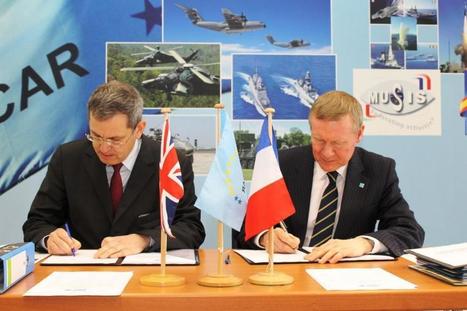

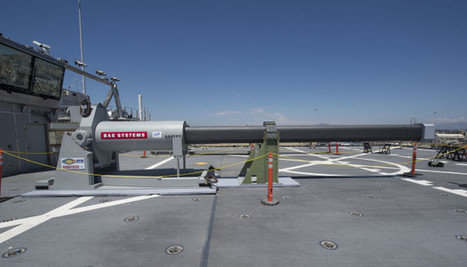
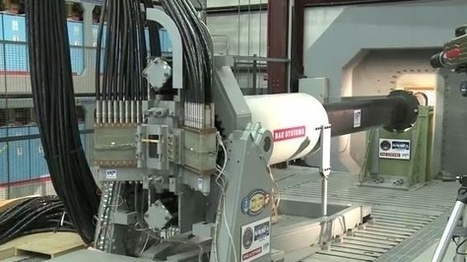

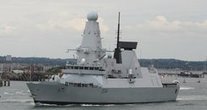
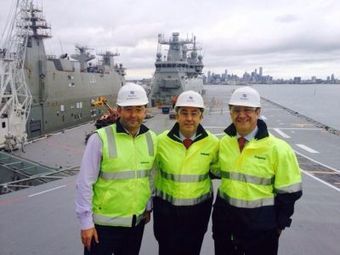



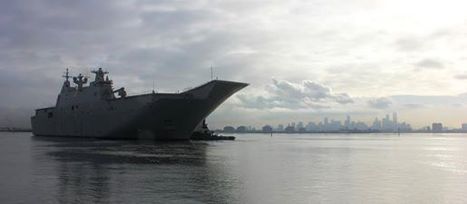
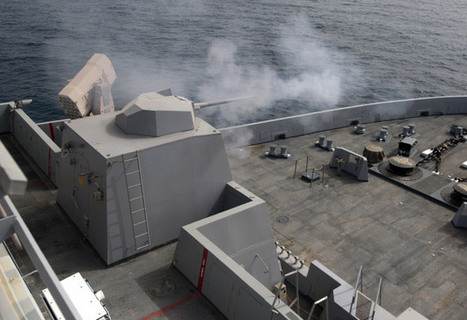
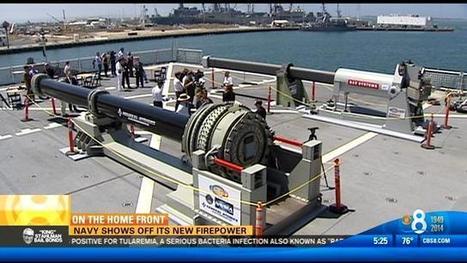
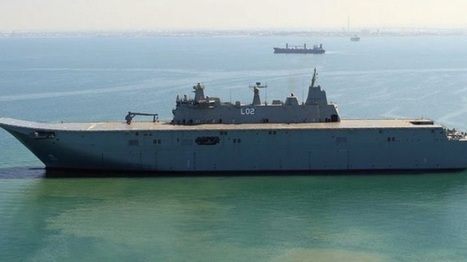
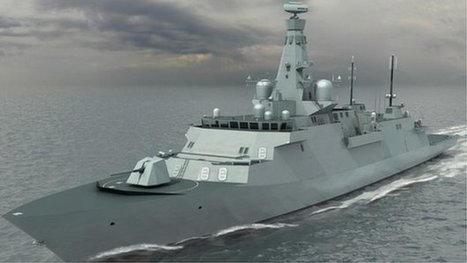
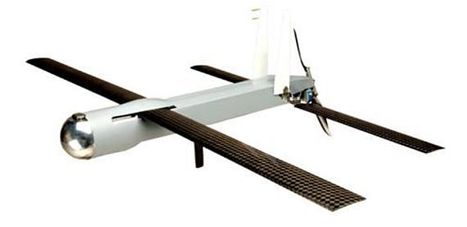
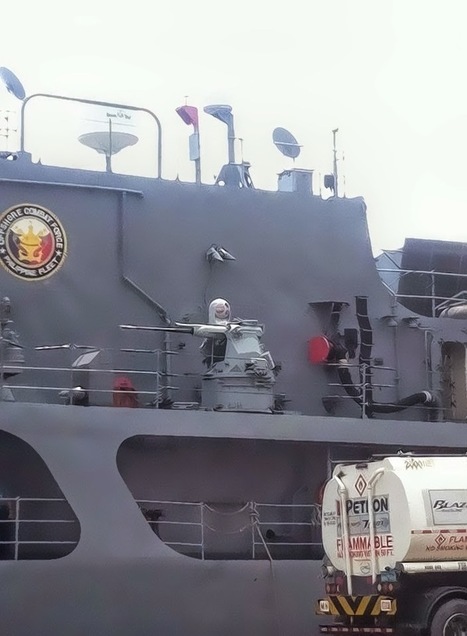

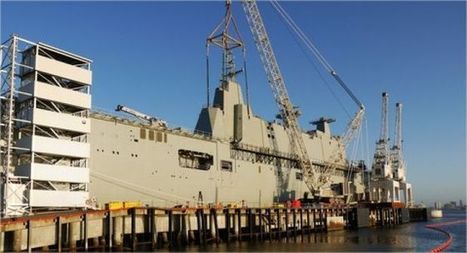
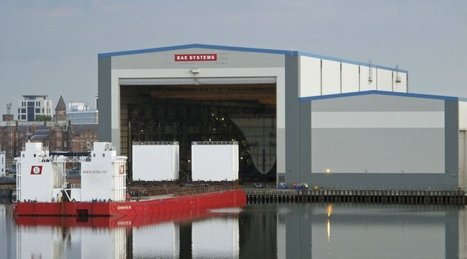

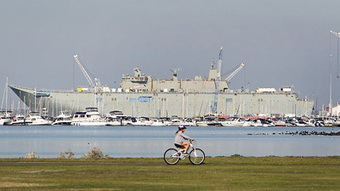
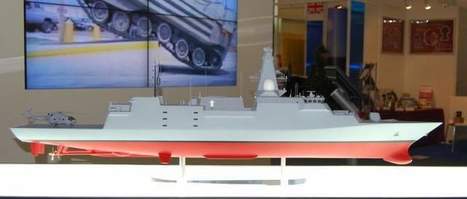
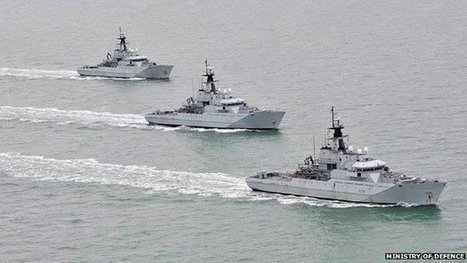







Plus de détails sur le programme MMCM dans l'article de Navy Recognition :
http://www.navyrecognition.com/index.php/news/defence-news/year-2015-news/march-2015-navy-naval-forces-defense-industry-technology-maritime-security-global-news/2542-thales-wins-french-uk-l-maritime-mine-counter-measures-r-mmcm-contract-slam-fmhc.html
On peut signaler que l'US Navy s'est lancé depuis quelques années dans un programme de drones spécialisés guerre des mines, éléments du Mission Package MCM des frégates LCS :
http://sco.lt/9Korsv
http://sco.lt/7I7LgP